At first glance, you might think the image above shows the same phone in two different colours, but you are in fact looking at the new iPhone 12 on the left and the outgoing iPhone 11 on the right.
The initial similarities belie the fact that the iPhone 12 actually represents one of the most dramatic iPhone updates in years, particularly in one of the most important areas to us AV aficionados – the screen.
So what's new? What makes it worth upgrading from the iPhone 11? And how do you do so? Here we'll answer all your questions and more...
iPhone 12 vs iPhone 11: price
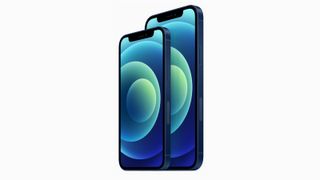
First things first: price. As you would expect for a newer, more advanced phone, the iPhone 12 is more expensive than the iPhone 11. It currently starts at £799 ($799/AU$1349), while the iPhone 11 costs £599 ($599/AU$999).
There are different prices for the different models of iPhone 12. The iPhone 12 mini is the cheapest option, starting at £699 ($699, AU$1199), while the iPhone 12 Pro is more expensive, with a starting price of £999 ($999, AU$1699). The iPhone 12 Pro Max is the priciest member of the iPhone 12 family, starting at £1099 ($1099, AU$1849).
**Winner** iPhone 11
iPhone 12 vs iPhone 11: design
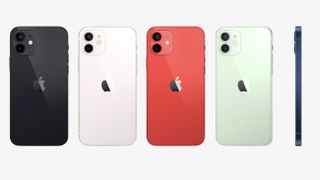
Both handsets look very similar from the front, but the iPhone 12's design is actually quite different to that of the iPhone 11, at least by Apple standards. The rounded edges have been replaced by smooth, flat aluminium, and it's more compact, too: 11% thinner, 15% smaller in terms of volume, and 16% lighter.
It comes in five colours: black, white, red, green and blue. The iPhone 11 comes in six (purple, yellow, green, black, white and red), so there's not much to choose between them on this front. But for the design tweaks, we prefer the 12.
**Winner** iPhone 12
iPhone 12 vs iPhone 11: screen
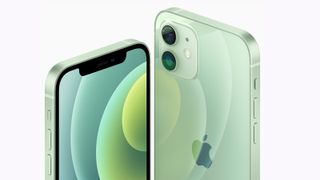
The iPhone 12's chassis is more compact but, thanks to thinner borders, the screen is the same size – 6.1in.
Spec-wise, it's actually a big step-up from the iPhone 11's display. For starters, it's a Super Retina XDR OLED rather than a Liquid Retina HD LCD. Pixel density jumps from 326ppi to 460ppi, contrast ratio from 1400:1 to 2,000,000:1, and support for HDR (in the Dolby Vision, HDR10 and HLG formats) has been added. This is all massive news for those of us who use our phones primarily as portable TV show and movie machines.
Keeping that screen safe is something Apple refers to as a 'Ceramic Shield', which is apparently tougher than any smartphone glass. The company says it's four times more likely than the iPhone 11's screen to survive a fall without cracking. Let's hope you never have to test that.
**Winner** iPhone 12
iPhone 12 vs iPhone 11: network speed
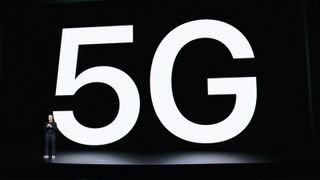
The iPhone 12 range sees Apple supporting 5G for the first time, which means that those with the appropriate contract and coverage will get a much faster data connection than with any previous iPhone. In perfect conditions, the iPhone 12 with 5G is capable of producing download speeds of up to 4Gbps, which is astonishingly quick.
Of course, real-life download speeds will be much lower. Verizon in the US is talking up 200Mbps as the ceiling and, in the UK, average 5G download speeds are currently under 40Mbps. That's still much faster than 4G, though, so this is a useful feature to have and it will only become more so as the currently patchy coverage expands.
**Winner** iPhone 12
iPhone 12 vs iPhone 11: power
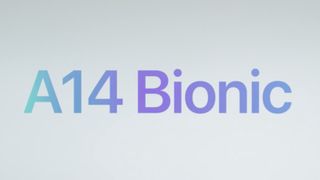
The A13 Bionic chip in the iPhone 11 still hasn't been outperformed by the processor of any Android phone, but Apple has still seen fit to replace it with a more powerful chip for iPhone 12.
The A14 Bionic is the first smartphone chip built on 5nm process technology. Very simply put, the transistors on the chip are even infinitesimally smaller than before, which means a whole load more of them can be packed in, increasing performance and improving energy efficiency. There are, in fact, 11.8 billion transistors in the A14 Bionic – that's nearly 40 per cent more than in the A13 Bionic.
Apple claims the A14 Bionic's CPU (central processing unit) and GPU (graphics processing unit) are each 50 per cent faster than the equivalents of any other smartphone. The long and the short of it is that the iPhone 12 should be miles faster than the iPhone 11. You might not notice that in day-to-day use, but as more advanced apps and games appear, it could become a factor.
**Winner** iPhone 12
iPhone 12 vs iPhone 11: camera
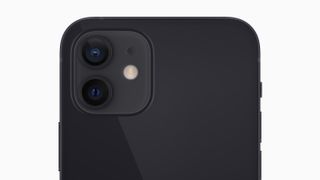
The iPhone 12's dual-camera array features the same Ultra Wide lens as the iPhone 11, but its Wide lens has been upgraded with a f/1.6 aperture, whereas the iPhone 11's has an f/1.8 aperture. To the point-and-shooters out there, that might sound like a downgrade, but the smaller number actually means that the aperture is bigger and therefore able to draw in more light. The upshot should be better low-light photography.
On the subject of low-light photography, Apple's Night Mode, which is specifically designed to maximise the amount of light in nighttime shots, can now be used in conjunction with all of the iPhone's cameras, including the one on the front. Great for selfies after dark, if that's your sort of thing.
On top of that, the iPhone 12 uses machine learning to analyse and enhance your shots, bringing out details that would usually be lost in shadows, for example. Better all round, in other words.
**Winner** iPhone 12
iPhone 12 vs iPhone 11: battery
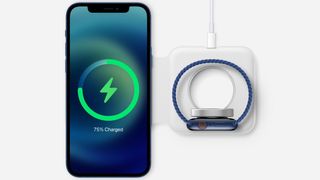
There's not much to choose between them in this category. The iPhone 12 squeezes out an extra hour of video playback over streaming, but that's about it. Though there is one rather neat new addition in the form of MagSafe.
This is the same magnetic tech originally seen in Apple's laptops. Then, it disconnected the power cable when pulled – if someone tripped over the charging cable, it would be yanked out, rather than dragging the laptop onto the floor and potentially causing it damage. But on the iPhone 12, it opens the door to all sorts of new chargers and accessories.
Wireless chargers just 'snap' into place, so you don't have to worry about positioning them correctly. Just place it down and off you go. It also means you can charge all your Apple devices on one wireless charger – like Belkin's, or Apple's (pictured) – and you'll soon be able to 'snap' on all kinds of accessories to your handset, such as cases, new camera lenses, and more. The sky's the limit.
MORE:
iPhone 13: release date, news and what to expect
Apple has a new speaker too: Apple HomePod Mini: everything you need to know
And some new headphones in the pipeline: Apple AirPods Max

